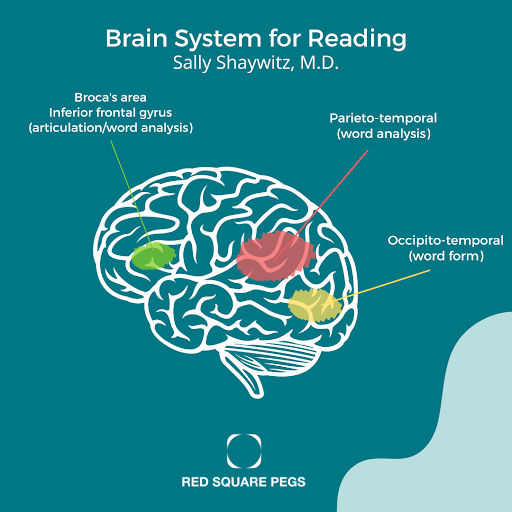It’s a Processing Thing
POSTED ON: November 8, 2021

A common dyslexia explanation explained
“It’s an information processing difference!”
Have you heard dyslexia described this way? Have you used this common go-to statement? Did you understand what the “difference” is and how it impacts someone with dyslexia?
I’ve heard it, I’ve said it. I had no clue!
I found myself in conversations where I’d describe my boys’ dyslexia as “they process information differently.” I always walked away feeling this statement was inadequate. It felt like a placeholder meant to bring comfort—and maybe at one point it did—but it no longer felt sufficient nor acceptable. I was sick of dyslexia being a stranger in our lives. I wanted to know more and I wanted to understand this aspect of myself and my children.
My husband often refers to me as a complete nerd. Considering my past struggles in school—I wear this as a badge of honor. I discovered I LOVE learning, and when I’m learning about something I’m passionate about—I’M ALL IN!
So, I did what any self-proclaimed nerd would do, I signed up for a four-week course entitled “What is Dyslexia” which took an in-depth look at the groundbreaking scientific research of Sally Shaywitz, M.D. and Jonathan Shaywitz, M.D., the authors of Overcoming Dyslexia, and is the primary source for this post.
First, it’s important to understand that reading is NOT something that comes naturally to anyone. It’s a man-made invention. Unlike speaking, our brains are not naturally wired to read or write. In order for reading to become automatic and fluent, complex interconnected neural pathways in the brain have to work rapidly and uninterrupted. As a reader’s skills grow, these pathways grow stronger.
This complex system consists of three areas on the left side of the brain:
The Inferior frontal gyrus can be found in the front and is the area of the brain responsible for articulation and word analysis.
The Parieto-temporal (PT) and Occipito-temporal (OT) systems are located towards the back of the brain, which Sally Shaywitz refers to as the two distinct pathways for reading words.
The PT system is essential in the early stages of learning to read—the initial analyzing of a word, pulling it apart, and connecting letters to their sounds.
The OT system is referred to as the visual word form area and is crucial in reading with fluency.

As described in Overcoming Dyslexia, instead of analyzing a word, the OT region reacts almost instantly to the whole word pattern. One brief glance and the word is automatically identified, on sight (Shaywitz, 2020 pg. 76).
These different areas of the brain are responsible for a reader being able to identify letters, connect letters to the sounds, and garner meaning from words. When this all comes together—it’s reading.
What is the processing difference between typical and dyslexic readers?
It all comes down to brain activation patterns. When reading…
In a typical reader – all three reading neural systems activate, with more activation in the back left of the brain (the OT and PT regions), which is key to reading and a signature of a typical/good reader.
In a dyslexic reader – the reading neural systems in the back left of the brain are underactive and the front right system is overactive. These different activation patterns are known as the neural signature of dyslexia.
These are the processing differences we often refer to. With science and technology, we can now understand how this impacts a dyslexic.
How do these different brain activation patterns impact someone with dyslexia?
To compensate for these “underactive” and/or “overactive” activation patterns, alternate pathways are used in the front of the brain. The underactive back systems prevent a dyslexic from having rapid and automatic word recognition, making reading a manual process rather than automatic. Which means, even though a person with dyslexia can learn to read accurately, with the underactive back systems and use of alternate routes, reading is more complex and takes longer compared to a person without dyslexia. This results in compensatory strategies such as, memorizing whole words, looking at pictures to help with meaning, guessing from background knowledge, etc.
The posterior reading system (the underactive systems) is essential to early reading, which is why early identification and intervention is so critical. Early intervention improves reading and can rewire the brain by initiating the development of the pathways needed for reading. As a reader’s skills grow, these pathways grow stronger.
In short, people with dyslexia use a different area of the brain and pathways when processing language. When it comes to reading and the brain, this is the tip of the iceberg. It’s complex and complicated. But for me, even acquiring this basic level of understanding filled a huge missing piece of the puzzle. I hope it does the same for you.
Reference:
Shaywitz, S. E., & Shaywitz, J. (2020). Overcoming dyslexia (p. 27-30, ). Alfred A. Knopf.
Red Square Pegs was established to empower dyslexics by embracing dyslexia through awareness and shared experiences and to be a symbol of acceptance, pride, and confidence.

